
Hire Autism Job Seeker Finds Meaningful Employment
William Sowell came to the Hire Autism job board with a goal: to find a job that was meaningful to him, fit his skillset,…
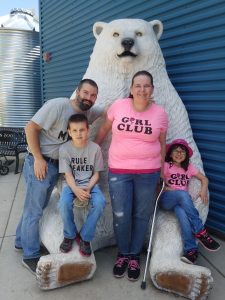
“Autism is our life,” Pearl Fessenden, mother of 10-year-old Matthew Fessenden, said. “We expect him to live in our world when, really, we should be trying to live in his.”
Pearl Fessenden is the mother of two children: Matthew, who has autism spectrum disorder (ASD), and Carmen, who has Asperger Syndrome. Through a religiously timed-out day-to-day schedule that few could perform as flawlessly as she does, Fessenden goes beyond the role of a typical mother.
“For us, our day doesn’t start when the alarm goes off to wake up for the day,” Fessenden said. “Our day starts the night before. We have to explain to him with visual aids and a social story of what’s going to happen the following day.”
Matthew has many sensory-related aversions and sensitivities.
“He is not able to eat regular food like most kids,” Fessenden said. “His stuff has to be pureed, so I have to make sure that his food is ready and that it’s at room temperature for him to eat it. If it’s too hot or too cold, he won’t eat it because his mouth is that sensitive for temperatures and textures.”
Watching her son grow up, Fessenden longed for a resource that other kids could relate to, something which could help Matthew’s peers have a better understanding of his autism. When she stumbled across OAR’s Kit for Kids program, she knew she had found what she had been looking for.
Over the past two years, Fessenden has introduced the peer education program to more than 40 classrooms. Kindergarteners were paired up with third-grade reading buddies to establish peer-to-peer mentorship, and to help with reading the materials.
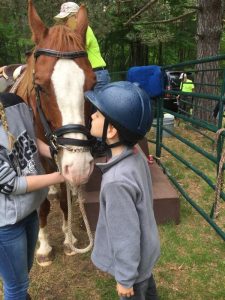
The lessons proved beneficial not only for Matthew but also for other students on the spectrum. Other children were discovering that it is okay to disclose that they are on the spectrum, free of fear and judgment by their peers.
The Kit for Kids includes an online introductory video, “What’s Up with Nick” booklets, a how-to sheet, a lesson plan, a small classroom poster, a helpful tips sheet, and printable activity workbooks ranging from grades K through eight. There are enough materials in a single kit for 20 students.
“Everything that I found out there was all for how your family can help with autism or what to talk to your doctors [about] if you have questions about autism, but not really anything else, [like] how to tell your classmates and your friends,” Fessenden said. “And so I came across the “What’s Up with Nick?” kits with OAR and I was like ‘this would be perfect.’”
Starting with Matthew’s class, Fessenden has been going into classrooms to introduce OAR’s Kit for Kids program to the students and teachers. She wanted the children to be introduced to the facts about autism at a young age so that it wouldn’t be a point of bullying or harassment for Matthew when he got older.
“I had a first grader last year come out to his class that he had autism,” Fessenden said. “He was like ‘that’s me.’ And the teacher was like, ‘oh my god, that makes so much sense.”
When Matthew made the transition into an intermediate school, new students from another elementary school were added to the mix. This created the opportunity for the students who were familiar with autism, thanks to Fessenden, to lead their peers on an educational journey.
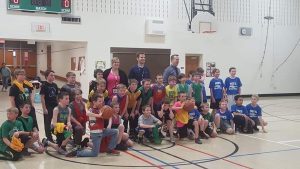
“The ones that had experienced [the Kit for Kids program] at my son’s previous school were already familiar with it and were like ‘yes, we get to do it again, and we get to show our classmates what this is about,’” Fessenden said. “And they were kind of wanting to be the teachers, and I just let them lead it. I was like ‘you guys go right ahead. They’re going to accept it more from you than from me because you guys are their friends.’”
Fessenden is just as concerned with what the future holds for the children she is educating as she is with how they currently treat their peers like Matthew.
“I want to see what I can do when they’re older; I want to see if these students continue [these lessons],” Fessenden said. “But from this past year, I’ve seen them accept other children, want to get to know the kid. There were kids in my son’s class that kind of didn’t want to interact with my son.” After Fessenden gave the Kit for Kids lesson, all of that changed. “They wanted to get to know him.”
From her observations, it is clear that there has been an increase in interaction between students with ASD and their peers. However, Fessenden denies credit for the positive exchanges and newfound relationships being formed between students; she extends all of the credit to the children.
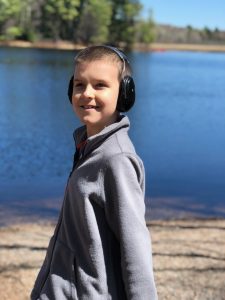
“… I don’t really think it’s me that’s doing it,” Fessenden said. “I think it’s the kids taking that information and [implementing] it on their own. I’m just telling them about it, and they’re taking it and running with it.”
Where Matthew was previously rejected and ignored by his peers, they have progressed to asking him yes and no questions that he is able to answer given his limited communication skills. Many students even give him hugs and hold his hand to lead him to join the other children playing games during recess.
“I would have to say the biggest impact for me, because it was so personal for me, was seeing my son make friends,” Fessenden said. “He didn’t have friends for a lot of years because he was nonverbal and kids just couldn’t relate to that. And once we started doing the “What’s Up With Nick” materials, kids were okay with him not talking back. They realized that just because he couldn’t speak didn’t mean that he couldn’t understand.”
In the past, autism was not your typical dinnertime conversation; it was hidden away and lacked the discussion it deserved. Now, with resources like the ones produced by OAR, Fessenden has hope for future generations.
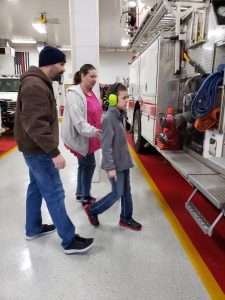
“I know that these kids in his grade level now are going to be the adults he interacts [with] when he’s older,” Fessenden said. “The fact that they’re getting this educational material now is just going to make it so much easier for him when he’s an adult. If they see him walking down the street, it’s going to be the police officer who pulls over to ask him if he’s okay… the doctor that he goes to for his annual checkups… his supervisor at work that already knows how to interact with him… I think this was that foundation that was laid to get that to happen.”
Starting the conversation now is how to shape a better future for children like Matthew. With a growing variety of educational resources, parents as dedicated as Fessenden, and an increasingly willing-to-learn population, the future is hopeful for people on the spectrum.
That, and lots of coffee.
“Lots and lots of coffee,” Fessenden said. “Can’t get through the day without coffee. I don’t know an autism mom that can get through the day without coffee!”